Arsenal New Home to Endangered Ferrets from Stapleton Front Porch on Vimeo.
In early October, the Rocky Mountain Arsenal National Wildlife Refuge reintroduced a species that was once thought to be extinct: the black-footed ferret. The animal’s release into the wild is a symbol of a stunning conservation success story.
“This place [the refuge] shows that nature will recover and will thrive if it’s given the chance. It also embodies hope of insurmountable odds,” said Dan Walsh, director of the U.S. Fish & Wildlife Service, at the ferret release on October 5.
The black-footed ferret is an unusual critter. It is a part of the weasel family and the only ferret native to North America, according to the U.S. Fish & Wildlife Service. It has short legs and a long tan body (about 18 inches) with an adorable face that looks like it’s wearing a black mask.
The ferret is native to prairie grasslands with its main food source the prairie dog. Unlike prairie dogs that are stout and slow, ferrets’ long, slender bodies make them agile. They also have strong jaws and long teeth meant for eating meat. A male ferret eats 100 prairie dogs a year and a female 150. Due to widespread prairie dog eradication programs, the ferrets’ food source was massively cut down. Also, urban growth into grasslands destroyed their habitats. Both of these factors left the ferrets near extinction. In fact, the species was thought to be extinct until a dog in Wyoming brought home a ferret to its owner in 1987. Scientists surveyed and discovered 18 remaining ferrets that, by persistence, had somehow survived. The discovery began the Black-footed Ferret Recovery Program in Ft. Collins, where the 18 ferrets were brought. Through the breeding program, the population has successfully been restored and since 2013, about 500 ferrets have been released into the wild around the country. At the Rocky Mountain Arsenal National Wildlife Refuge, 30 ferrets were released on October 5.
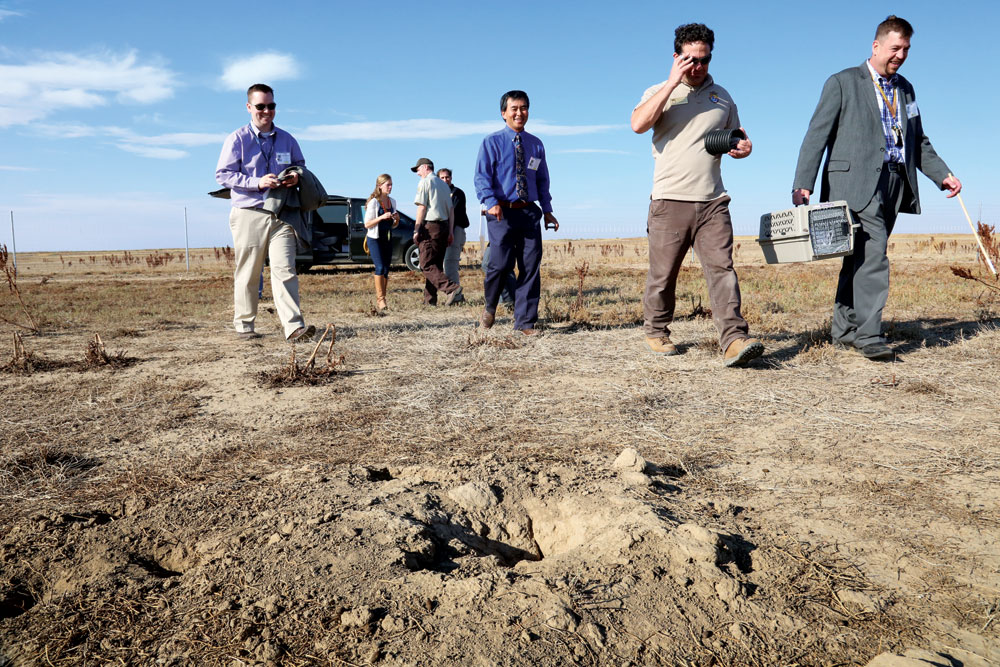
U.S. Fish & Wildlife Service employee, along with volunteers, walk to a prairie dog’s hole where they will release a ferret.

A black-footed ferret pokes its head out of the kennel and looks at the wild for the first time. It has spent its life in a breeding facility in Ft. Collins.
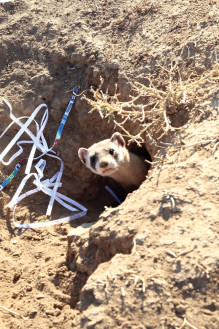
After scurrying into the prairie dog hole, the ferret continually pops back up to check out the world above ground.
Volunteers were selected to help release the ferrets. At the area of the refuge where prairie dogs live, each volunteer was given one ferret in a cage. The ferrets will help maintain the prairie dog population at a natural level. By reintroducing the top of the food chain, ecosystems function more naturally—a term called trophic cascade, according to Dave Lucas, refuge manager. The best example is the reintroduction of wolves in Yellowstone National Park that changed the behavior of elk.
Each volunteer opened the kennel and waited for the ferret to poke its head out, which took some coaxing, or gentle shaking of the kennel. Being nocturnal, the ferrets hissed and screeched to be awoken and kicked out of bed. The ferrets scurried into the prairie dog burrows, where they are taking up residence. Ferrets come into the prairie dogs’ holes at night and feast. Then they use the burrows to sleep, raise their young, and spend time when they’re not hunting.
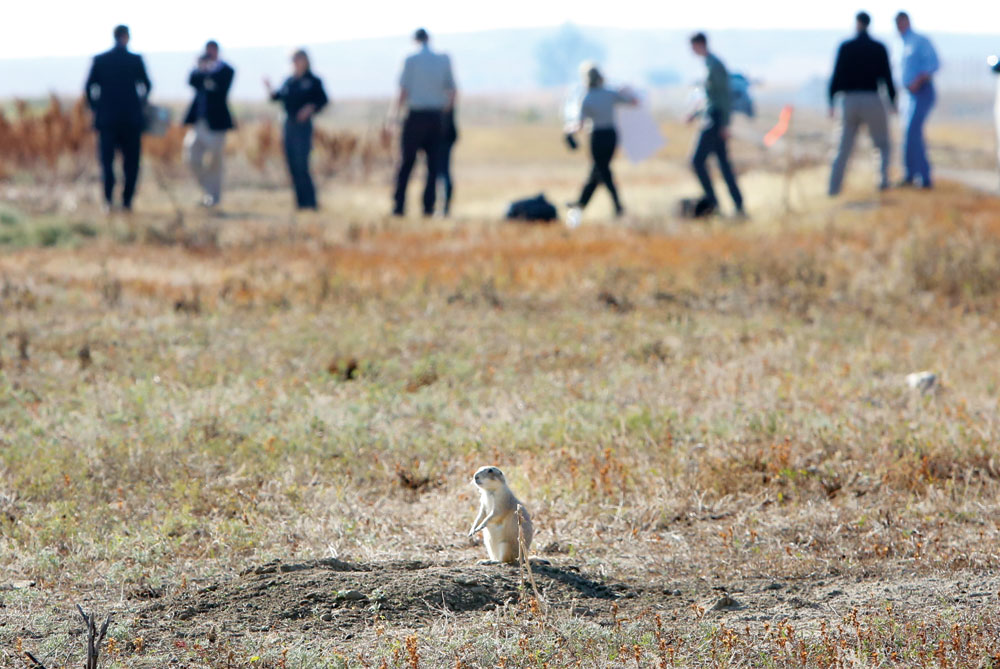
A prairie dog doesn’t know what’s coming. Black-footed ferrets’ main diet is prairie dog, which helps keep the prairie dog population at a natural level.
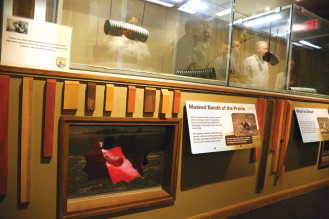
The exhibit has two levels, one above ground where ferrets in the wild hunt, and one below ground where ferrets take over prairie dog holes and sleep during the day.
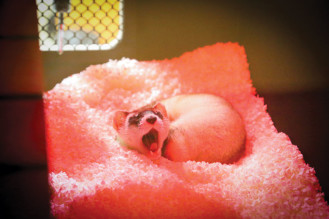
A yawning ferret named Seabiscuit coils up to go to sleep.
Because the ferrets are nocturnal it is unlikely that spectators will see the ferrets in the wild, but the wildlife refuge now has a ferret exhibit to give people that experience. The exhibit has two sides to replicate above the ground and below the ground. It is the only indoor-outdoor ferret exhibit in the world. The side meant to show below the ground is kept cool and darkly lit for the ferrets to sleep. The side meant to show above the ground is warm with brighter light and a water feeder and food.
The exhibit is home to two ferrets that are beyond breeding age, Louise and Seabiscuit. They don’t like each other so they have separate areas. Seabiscuit slept, coiled up, the entire day of the release, while Louise was up and active.
“Louise, come here. Come on, it’s OK. She likes me,” says Dave Lucas. Louise is the grandchild of one of the 18 surviving ferrets and a treasure to the conservation story. She is so curious her nose touches the glass peaking at Lucas.
This is the only place in the world people can see the ferrets’ charismatic nature. Lucas believes the ferrets are one reason the Rocky Mountain Arsenal is the premier wildlife refuge in the country, offering city dwellers an escape to native prairie land. Ferrets continue to be bred at the facility in Ft. Collins and more are planned to be released in 24 other locations in Wyoming, South Dakota, Montana, Arizona, Utah, Kansas, New Mexico, Canada and Mexico.




0 Comments